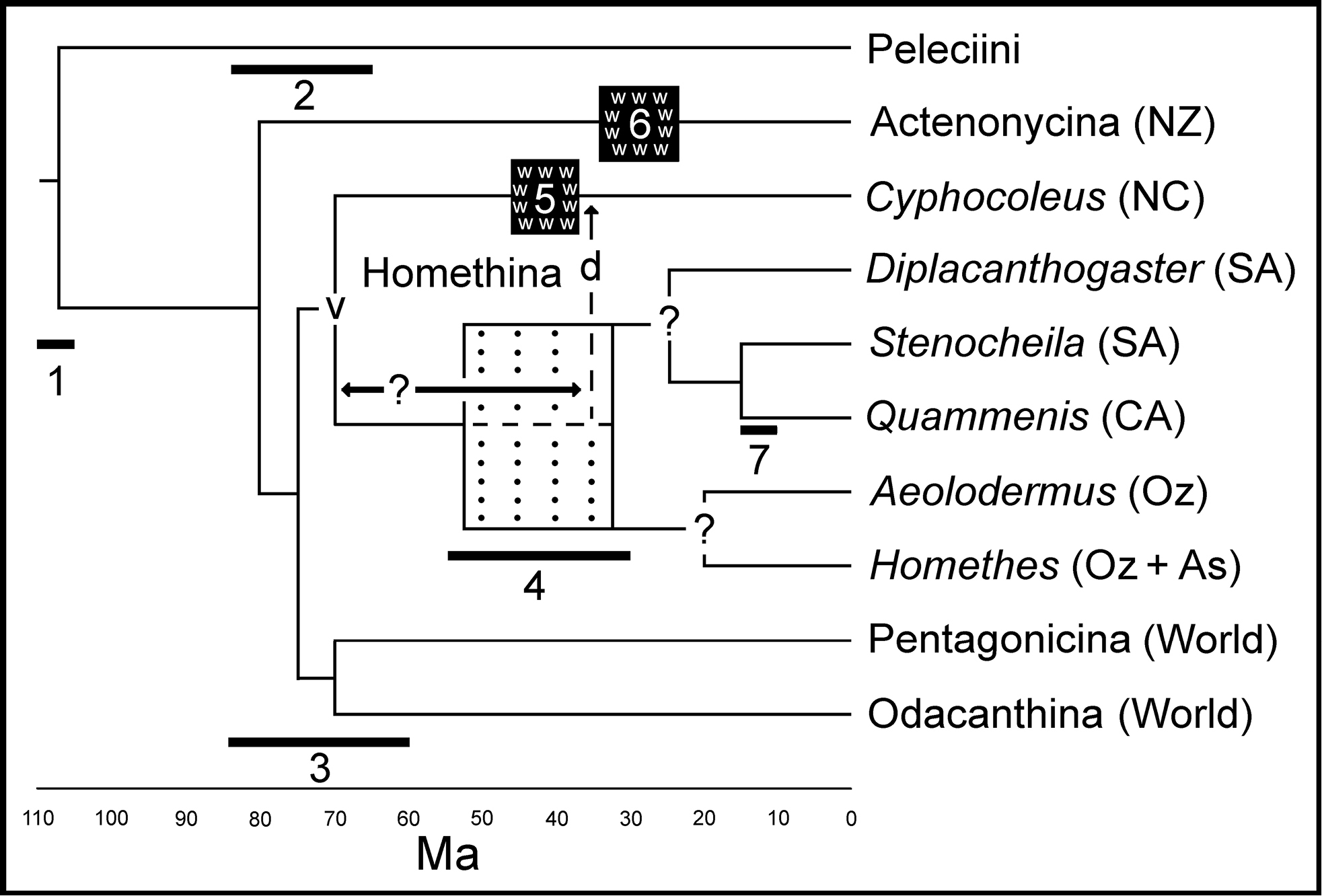
|
||
|
Diversification history of odacanthine subtribes and generic-level taxa within Homethina placed in temporal context defined by major geological events and molecular dating estimates (Ober and Heider 2010). Major events and dating estimates constraining historical relationships of the represented taxa include: 1, 100–105 Ma, estimated age of origin of Odacanthini relative to its proposed adelphotaxon Peleciini (Ober and Maddison 2008, Ober and Heider 2010); 2, 84–65 Ma, estimated divergence times of lineages within Odacanthini, represented in this study by Actenonycina, Pentagonicina, and Odacanthina (Ober and Heider 2010); 3, 84–61Ma, rifting of Zealandia, including New Caledonia and New Zealand, from Australia (McLoughlin 2001, Ladiges and Cantrill 2007); 4, 50–30 Ma, extended rifting and increased isolation of Australia and South America from Antarctica due to opening of the Tasman Sea at 50 Ma (Woodburne and Case 1996, Sanmartín and Ronquist 2004), development of the Australo-Antarctic Gulf at 35–32 Ma (McLoughlin 2001, Lawver and Gahagan 2003), and opening of Drake Passage at 34–30 Ma (Livermore et al. 2005); 5, 46–37 Ma, hypothesized submergence of New Caledonia (Grandcolas et al. 2008); 6, 34–23 Ma, hypothesized Oligocene drowning of New Zealand (Campbell and Hutching 2007); 7, 15–10 Ma, closing of Panamanian Isthmus establishing subaerial contact between South and Central America (Montes et al. 2015). Time of divergence of Cyphocoleus unconstrained due to lack of molecular-dating data. Under vicariance hypothesis (v), the ancestor of Cyphocoleus was emplaced on Zealandia in Late Cretaceous (event 3). Under dispersal scenario (d with dashed line), Cyphocoleus dispersal to New Caledonia is constrained at the lower bound by reemergence of Grande Terre after putative Oligocene submergence (event 5), and at upper bound by amphiantarctic vicariance at Austral-Antarctic Gulf that isolated Antarctica from Australia (event 4). |